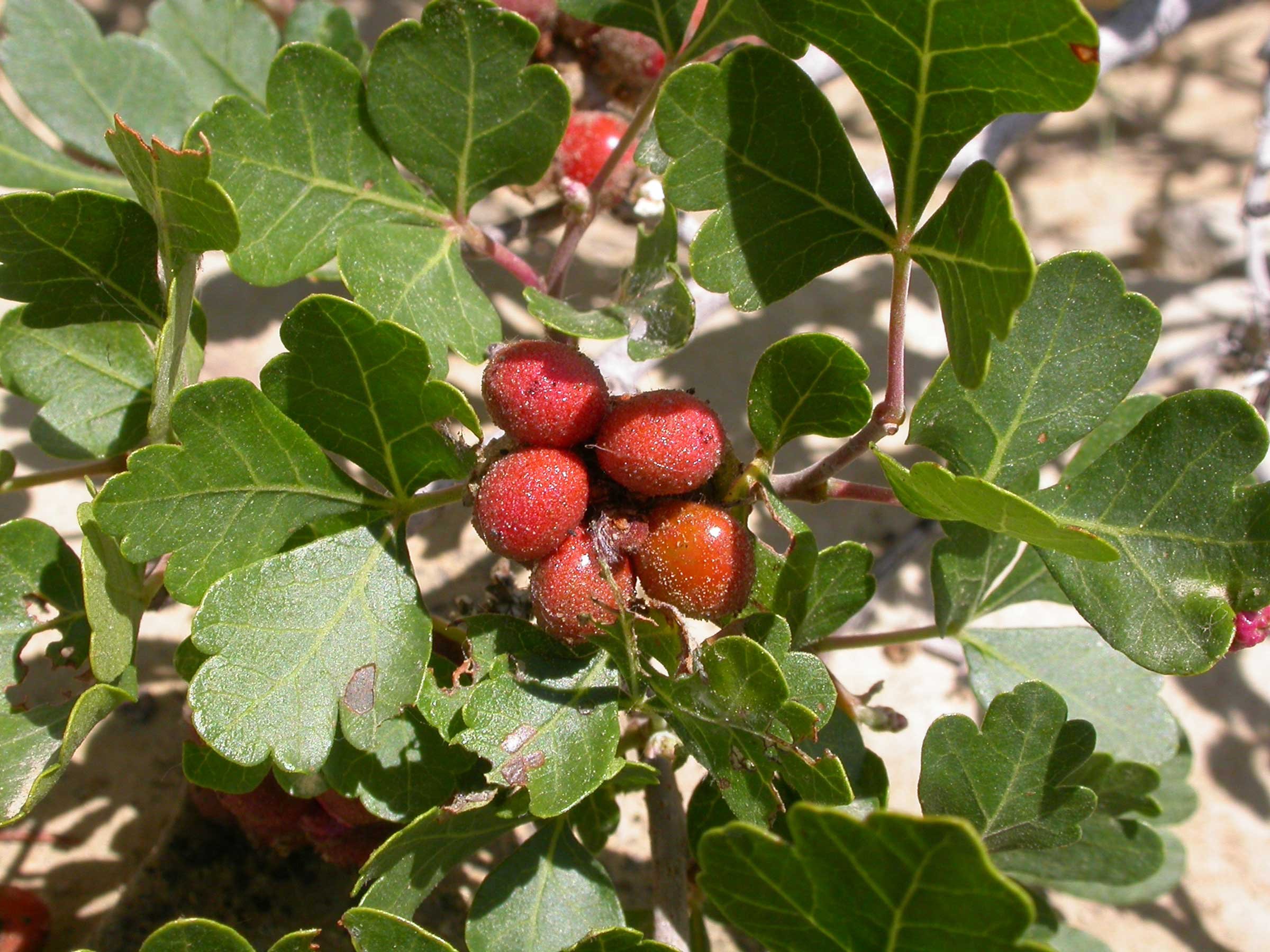Sourberry

Zesty Sumac Drupes Might Be Growing in Your Own Backyard
by Torrey Douglass
Fruit from the hardy sourberry provided a lemony tang to dishes long before lemons were introduced to North America. The berries—bright red, slightly sticky, and roughly ¼” long—ripen in fall and can persist through the winter, a welcome food source for birds, other wildlife, and even people!
Also known as three-leafed sumac or rhus aromatica, the plant can grow as a low groundcover 2-3’ high or a large, bushy shrub up to 6-8’, depending on the amounts of light and moisture it receives. It is drought tolerant and boasts glossy green leaves in groups of threes, just like its cousin, poison oak. Sumac is common all along the western coast, from Baja California to Oregon, showing up in a variety of landscapes from oak woodlands, seasonal streams, and chaparral, primarily below 3500’ elevation.
Za’atar spice blend
The sumac fruit are drupes that contain a single hard seed, ripening from light green to dark red as the year rolls along. Wait until the berries are a rich red before picking. (Gloves and old clothes are advised due to the fruits’ sticky coating.) Indigenous Americans used the berries to settle an upset stomach or ease a toothache, or to make a refreshing, tart drink not unlike lemonade. If you try your hand at a sourberry lemonade, don’t rinse off the berries’ sticky coating, as that adds a natural sweetness to the drink. Instead, soak the berries in cold water for 2-4 hours before draining through increasingly finer meshes to remove any particulates.
Where the fruit really shines is in your spice cabinet. Sumac is widely used in Middle Eastern cooking, often as a key element of the popular Za’atar spice blend in combination with sesame seeds, thyme, oregano, and salt. But it’s perfectly suited to be used as a standalone ingredient as well, in place of lemons or vinegar for a tangy, gently acid flavor. Sumac adds spark to lentils, meats, fish, hummus, roasted vegetables—really any dish that could use a zesty wake-me-up.
Instructions
To make the sumac “spice,” first dry the berries. In hot and dry weather, you can do this by spreading them out on a cookie sheet under a protective screen, but in colder seasons, put those sheets in the oven for 3-4 days, periodically turning it on the “low” setting (less than 150 degrees) several times each day.
Once the berries are dry, grind them gently with a mortar and pestle—hard enough to press out the seeds from the fruit, but not so hard as to crush those seeds. Move the mixture to a plate, then “shimmy” the plate and tilt it, placing your hand perpendicular to the plate to hold the hulls back and let the seeds slide away under it. Discard the seeds.
After cleaning and drying the pestle, return the hulls to it and finish grinding into a powder (you can also use a coffee grinder for this step). Store in a jar. Soon you’ll be reaching for it whenever you’re cooking up something delicious in your kitchen.
Note: Like cashews, mangos, and pistachios, sumac is in the Anacardiaceae family. If you have allergies or food sensitivities to these foods and/or poison oak, avoid eating sumac.
Fruit Photo by Matt Lavin from Bozeman, Montana, USA, CC BY-SA 2.0 <https://creativecommons.org/licenses/by-sa/2.0>, via Wikimedia Commons. Spice photo by annafood, CC0, via Wikimedia Commons.

